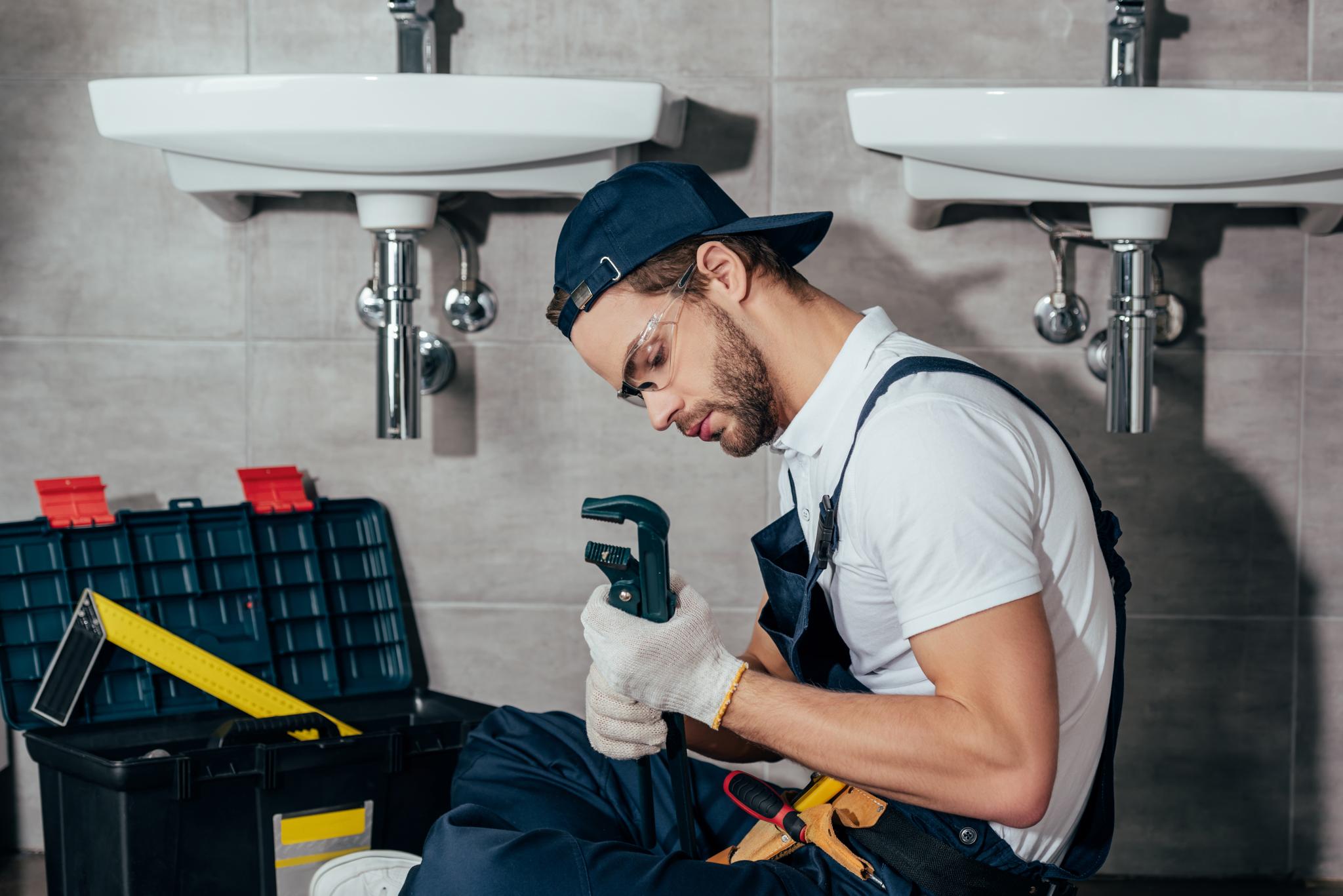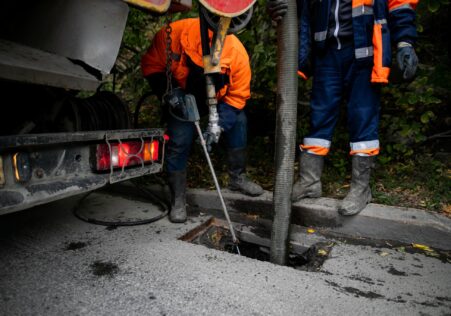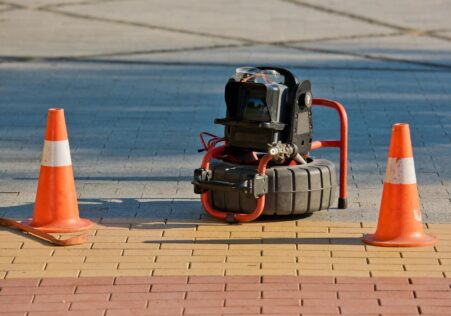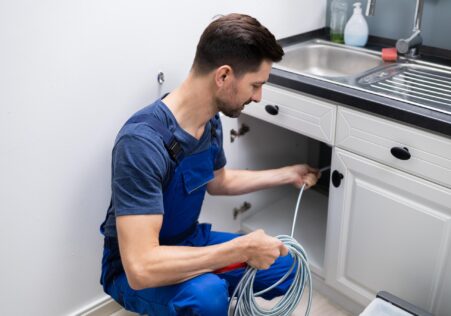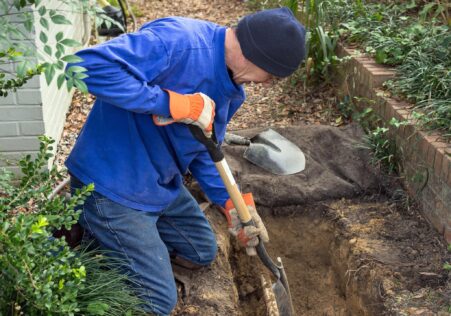What to Do When Your Toilet is Blocked: A Step-by-Step Guide

Toilet blockages can occur at any moment and can be a frequent household problem. They can be uncomfortable messy and uninspiring, and require immediate attention. However, you don’t always have to call an plumber immediately. In this blog post, we will guide you through some simple steps to get your toilet unclogged within a matter of minutes.
Key Takeaways
- Toilet blockages can be resolved using simple tools and techniques like plungers, baking soda
The tools you’ll need
Before we get started we must be prepared with these tools at hand:
- Rubber Gloves
- Plunger
- Baking Soda and Vinegar (Optional)
- Hook for the Wire Coat or plumbing Snake (Optional)
Step 1: Close the supply of water valve.
The first thing you need to do when faced with a blocked toilet is shutting off the supply of water in front of the toilet. This will ensure that no water will enter the tank as you attempt to clear it. The valve is normally located near the bottom of the tank, on the other side.
Step 2: Be sure to protect yourself with rubber gloves.
Your hands must be protected from germs or bacteria found in your toilet bowl by wearing rubber gloves prior using any tools that help in unclogging.
Step 3: Use a plunger.
A plunger is undoubtedly the most effective tool to use for getting rid of blocked toilets. The first step is to gently push down upon the plunger until air is removed from it, then press firmly over the toilet bowl. Then, start to plunge continuously up and down for approximately 20 seconds. The suction caused when you plunge back and forth will remove any blockages.
Tips:
- Ensure you use a forceful but controlled movement.
- Place holes around sinks or shower drains if they’re close enough to prevent the release of pressure as you plunge.
Step 4: Try baking soda with vinegar.
If you’re not able to get the plunge working you can try this other method add half a cup of baking soda as well as one cups of white vinegar to the toilet. Let this mixture settle for about 15 minutes. It will begin to bubble but when it ceases to fizz it will be poured down with hot water (not hot) to clear the blockage.
Step 5 Utilize an iron coat hanger made of wire or plumbing snake.
If both plunging and baking soda/vinegar techniques have failed the problem, it’s the time to employ an electric coat hanger or plumbing snake. The coat hanger should be straightened’s wire until have a thick, thin wire with an angled hook at one end, or you can use to use the plumbing snake that is designed specifically for clearing drain clogs. Put the tool in the drain hole of your toilet and then twist and turn, push at the same time until you sense resistance; this is where the blockage typically occurs. Try to break up the blockages by using a back and forth motion without causing damage to your drainpipe.
Note:
- Never overdo pushing or pulling actions hard as they can cause more harm.
Step 6: Switch on the water supply, and then check the result.
Once you’ve removed any blockages, it is important to switch on the supply of water behind your toilet. Then flush it several times to ensure that all water flows smoothly now!
| Tools | Description |
|---|---|
| Rubber Gloves | Hand protection from potential bacteria or germs present in the toilet bowl. |
| Plunger | Most effective tool for clearing up blocked toilets. Press firmly over the hole in your toilet bowl and plunge vigorously up and down for about 20 seconds. |
| Baking Soda and Vinegar | Mixture to use if plunging doesn’t work. Pour half a cup of baking soda and one cup of vinegar into the toilet bowl. Let this mixture settle for about 15 minutes, then pour hot water down (not boiling) to flush out the blockage. |
| Wire Coat Hanger or Plumbing Snake | Tools to use if both plunging and baking soda/vinegar methods have failed. Straighten the wire coat hanger until you have a long thin wire with a hook bent at one end or use the plumbing snake, which is designed specifically for clearing drain clogs. |
Common Questions & Answers
How do I know when my toilet is not functioning properly?
One of the most frequent symptoms of a blocked toilet is when water rises to the top of the bowl after flushing. It is also possible to notice that the water drains slowly or you hear sounds of gurgling coming through the toilet.
What can I do if the toilet is blocked?
If you believe the toilet is blocked then avoid flushing it once more as this could result in flooding. Instead, turn off your water source valve behind the toilet and employ a plunger to try to remove any obstruction. If this doesn’t work you can call Sydney Blocked Drains Plumbers for professional help.
How can I stop my toilet from getting blocked?
Yes! There are numerous actions you can take to avoid your toilet getting blocked, including avoiding flushing non-degradable items such as Wet wipes, sanitary products or cotton wool in the toilet. Avoid spilling oil or grease down the drain, which could cause solidification and cause blockages to pipes.
What is the best time to call a professional plumber for a toilet that has become blocked?
If you’ve tried to flush into your toilet, but it won’t unblock or you suspect there’s a bigger issue with your plumbing system that is causing frequent blockages, you need to seek out a professional plumber, such as Sydney Blocked Drains Plumbers . We’ve got years of experience in dealing with every kind of plumbing issue and can swiftly diagnose and resolve any issues without causing any disruption to your home.
What is the best frequency to have my drains cleaned?
It is suggested that you have the drains cleaned out by experts like Sydney Blocked Drains Plumbers every 1-2 years. This will help prevent blockages and help keep your plumbing system functioning smoothly. If, however, you often have problems with drains blocking or slow draining of water despite being careful to not block them, then cleaning your drains every year would be beneficial.
These techniques are fairly simple to carry out and the majority of these items are readily available in households. If you’re facing a blocked toilet, prior to being anxious after attempting the methods mentioned above – contact Sydney Blocked Drains Plumbers ‘s expert plumbers located in Sydney , if you’re searching for professional help with problems with your blocked toilets.
Additional Information
- The Benefits of CCTV Drain Inspections for Blocked Drains and Corroded Pipes
- Saving Time and Money with CCTV Drain Inspection for Drain Clearing
- Why CCTV Drain Inspection is a Cost-Effective Solution for Your Plumbing Needs
- From Clearing Clutter to Securing Access Points: The Preparations You Need for a Successful CCTV Drain Inspection
- Blocked Drain Emergency? Here’s What You Need to Know About DIY vs. Professionals
- Save Money with These Simple Drain Maintenance Techniques
- Save Money and Time with Preventative Drain Care Practices
- Why Condo Complexes are Switching to Trenchless Pipe Relining Methods
- Reasons Why CCTV Drain Inspection is a Must Before Purchasing a Property
- The Benefits of CCTV Drain Inspections: How Often Should You Carry Them Out?


